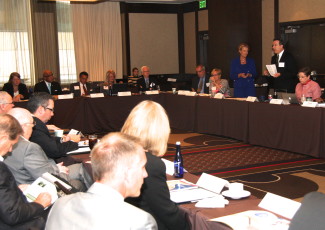College Readiness Program Boosts College Enrollment
By AACC Staff
March 9, 2015
Amid reports of general decline, Fullerton College grows, thanks to its high school outreach programs.
In recent years, community college enrollment has declined by about 2 to 3 percent each year. But as the economy continues to improve, not all colleges are reporting the dip. Enrollment at Fullerton College, in California, even grew by about 20 percent in two consecutive years.
One factor contributing to Fullerton College’s growth is outreach to high school students, which prepares them for higher-level courses. But was the college prepared for this growth? And how was it handled?
What follows is an excerpt of an article that first appeared in AACC’s Community College Daily. It discusses the bright spots amid declines in community college enrollment overall, specifically in relation to college-readiness programs.
While several of the nation’s fastest growing community colleges are in California, due mainly to voter approval of increased funding, Fullerton College, which grew by 23.8 percent between 2012 and fall 2013 and another 18.6 percent the following year, outshone them all.
President Rajen Vurdien credits Fullerton’s growth to its extensive support services and outreach to high schools.
Fullerton staff bring academic counselors to local high schools and give college placement exams in English and math to high school juniors. That’s critical, Vurdien said, because 80 percent of incoming students aren’t ready for college-level math and 70 percent aren’t ready for college-level English.
To better prepare students for college, high schools offer to seniors remedial courses approved by Fullerton faculty. Students who get a “C” or better don’t need to take developmental courses at the college.
Vurdien cited other efforts at Fullerton to help students succeed, including a goal spelled out in its strategic plan to raise the achievement rate of minority students, a strong transfer system and the Entering Scholars program, which provides mentors and other supports for first-year students. Fullerton also has more full-time faculty than other nearby community colleges, which means students are more likely to get after-hours support than at institutions with more adjuncts.
“Word gets around that the college is doing everything it can to help students,” Vurdien said. “When people see the results, they come to the college.”
The huge enrollment increase has strained the college’s facilities, however. More than 5,000 people are on waiting lists because the classes they want are full.
To handle the growth, the college increased the number of weekend classes, improved its analysis of the local job market and implemented an enrollment management system. In response to the data, Fullerton added more chemistry, math and English classes, which students need to transfer, and cut back on its police academy because demand among local police departments had slowed.
To read other examples of colleges that are seeing growth because of the demand for skilled workers, innovative programs and other factors, check out the full story on AACC’s Community College Daily.









